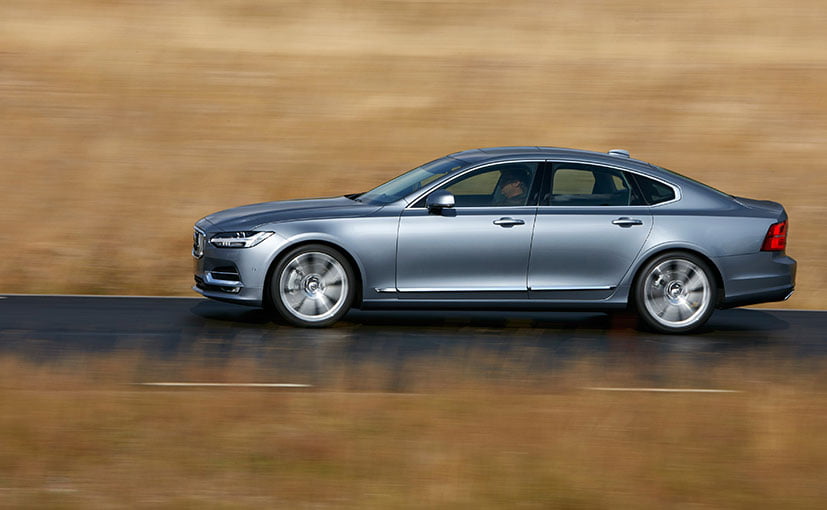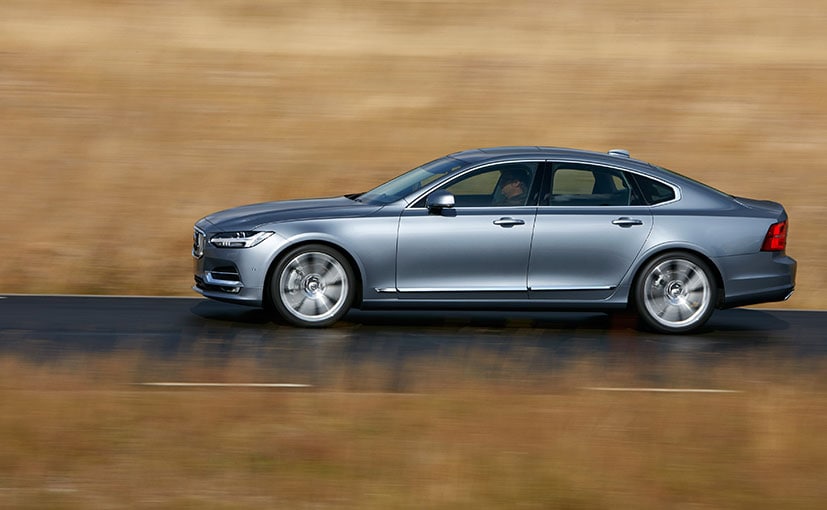
Volvo has sounded the clarion call with the S90. What no other luxury brand has been able to do the Germans yet – offer a comprehensive product with the chops to truly compete head on with their best – and make a dent! The S90 drives in to one of the most competitive and high volume segments of the premium car market. Taking on the mighty BMW 5 Series, new 5th generation Mercedes-Benz E-Class and Audi A6 (besides the Jaguar XF, Lexus GS, Infiniti Q70) is no mean feat. And let’s get this straight – while I may sound positive on the S90 being able to do that – it’s still Volvo we’re talking about. The Chinese-owned Swedish carmaker doesn’t have the scale, size or volume spread to truly unnerve the aforementioned Germans. But as a product it still helps push the benchmarks in the segment to a higher level. And make the Germans a little bit uneasy anyway!

Vovlo S90 is based on the SPA Platform
The key to success for Volvo rides on appeal and better technology. It has already showed us that it has the right idea there with the second generation XC90 that came out in 2014. The fact that consumers worldwide are happy to wait for it as bookings pile up is testimony to that. The S90 takes that a step ahead. It is also based on Volvo’s Scalable Product Architecture or SPA (That’s a transverse front-drive layout, a multilink rear suspension layout). So Volvo has a new flagship and yet retains its promise that it won’t go V6 or V8 any longer. The S90 is powered by an array of 4 cylinder engines options – 3 petrols and 2 diesels – and it’s the latter that we will get in India. Why diesel only you ask? Well for now Volvo sees its sub-2 litre range as an advantage over the rivals, but says it has not ruled out the 2-litre T6 petrol for a 2017 launch either. And hence I chose to drive both the D5 and the T6 – both with AWD as standard. Volvo expects the D4 FWD to account for the bulk of S90 sales in India but sadly that configuration was not available to me at the global test drive event in Estepona near Malaga, Spain.
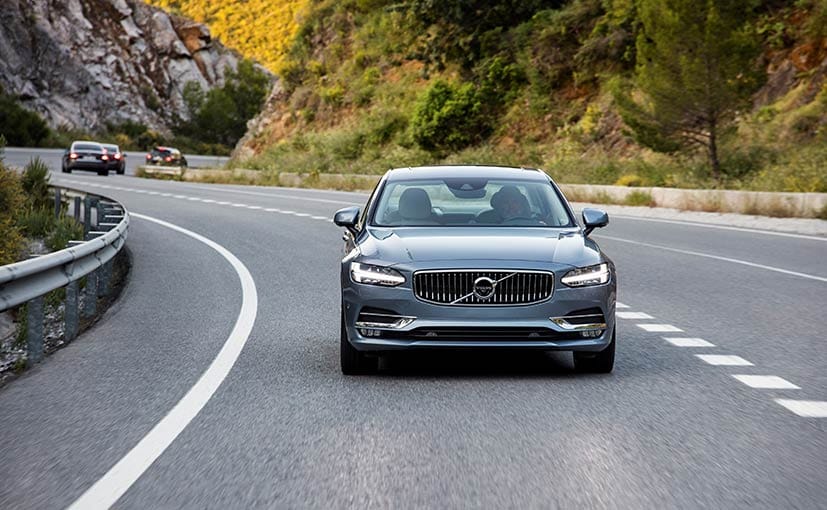
Volvo S90 Gets a 8-Speed Aisin-Warner Automatic Transmission
The D4 and D5 use the same 1969cc engine block with very different tuning. The former cranks out 190 bhp while the latter gives you 235 horses! Yes you read that right – and that’s with a 4-cylinder motor. Torque is good at 400 & 480 Nm respectively. The transmission is a standard 8-Speed Aisin-Warner automatic. I drove the diesel first. It uses a twin turbo charger, and for the most part comes across as punchy and extremely refined. In fact that is the big takeaway from the diesel drive. Unlike the previous gen D5’s 5-cylinder engine that used to warble and sound rough, the new 2-litre hums along nicely. You almost need to remind yourself it’s not a petrol! A niggling touch of otherwise non-existent turbo lag does stick out at around 2500-3000 rpm. But it’s momentary and it’s really the gearbox that falls just a bit short.

Vovlo S90 Comes with Eco, Comfort, Dynamic and Individual Modes
Its not scorching performance but you will not be left wanting either with the D5. It responds readily – and even though I found little difference between the drive modes, the Dynamic Mode will have the transmission upshifting at higher revs. The Drive Modes are: Eco (slightly annoying early upshifts), Comfort (better softer ride quality especially with optional air suspension), Dynamic (I largely left it there!) and Individual – where you set the steering, throttle, transmission to varying settings as per your whim. The steering is a bit off-centre and heavy in its feel – which is a bit distracting. I think Volvo would’ve done well to stay away from this electrically assisted setup. But it’s not a massive sore thumb area for me.
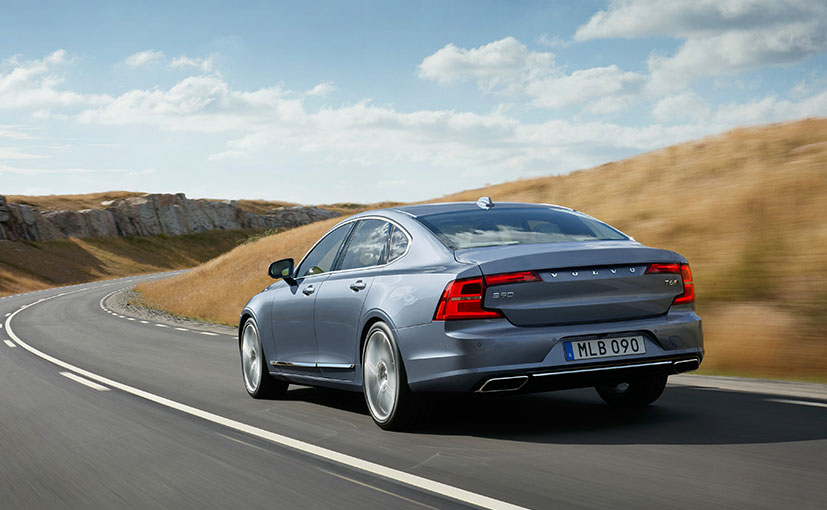
Volvo S90 Driving Dynamics
The car has Pilot Assist by the way – which means it self-steers by keeping a watch on the lane markings on the road. I have to say – unnerving as it was, it was also pretty effective – though isn’t very reliable on very twisty mountain roads! It is very sensitive though, and disengages if you keep you hands off the wheel for too long. The idea is for you have assistance to maintain a safe driving line, and not or the car to really takeover completely. And yes for it to be effective the road needs well-marked lanes and a decent surface. Unlikely Volvo will offer this on the India spec anyway.
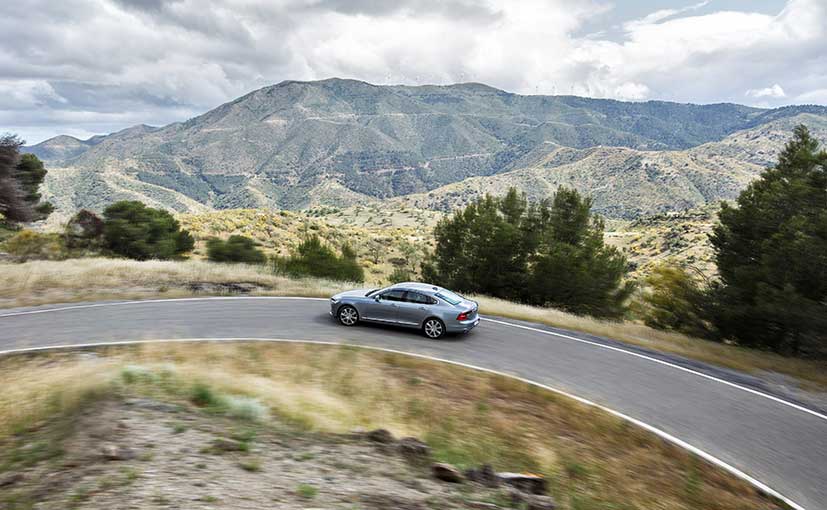
Vovlo S90 Comes With Pilot Assist
The roads around Estepona made for good testing ground – since I got smooth coastal highway with gorgeous views of the Alboran Sea, some broken and rough patches up on some nice mountain roads that were otherwise twisty and very fun! In fact that is when I switched to driving the petrol T6 and had quite a blast taking the corners nice and fast! The car responds well to that kind of treatment. It feels taut and never once loses its composure. Handling and precision are at the forefront here, though again let down ever so slightly by the heavy steering. The T6 motor is very smooth – and only occasionally does it give off the familiar rumble of a 4 cylinder. The car’s Bowers & Wilkins sound system sends out active noise cancellation and so the cabin remains nicely cut-off from the environment outside.
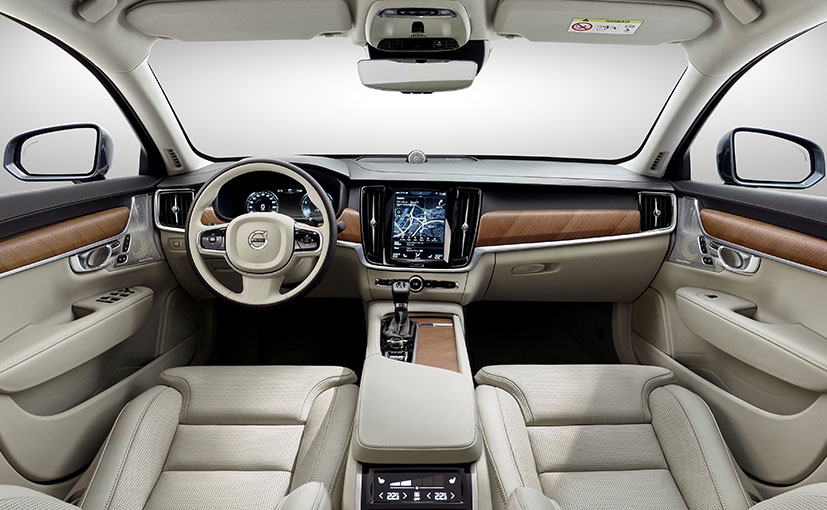
Volvo S90 Dashboard
The S90’s cabin is a very nice place to be – in fact I would go so far as to say that the interior of the S90 is Volvo’s trump card. It’s smart, airy, very well crafted, sensually designed and impeccably built. It’s also studded with all the technology your greedy little heart desires. At the centre of it all (like in the XC90) is Sensus – the car’s infotainment HQ. I’d loved the tablet-like swipeable interface on the XC90 as well and it’s even better on the S90. It is slightly smaller on the S90 too. But I must admit that navigating it takes some getting used to.
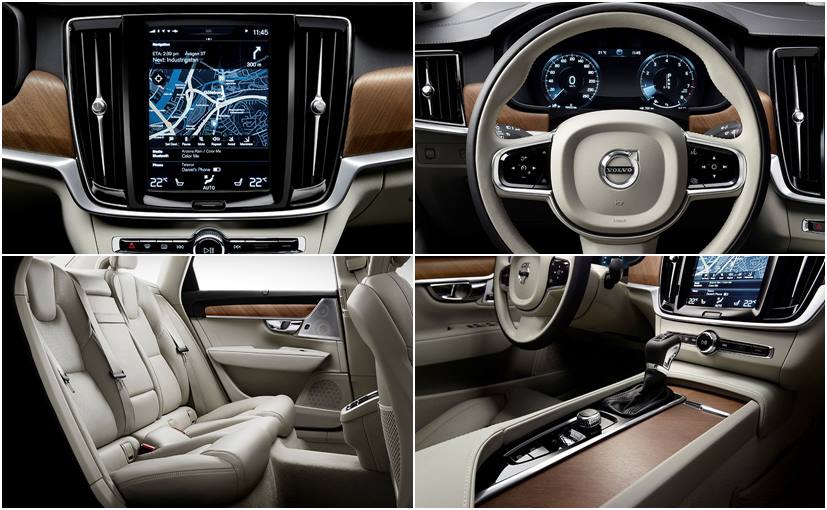
Volvo S90 Cabin
The car’s virtual instrument cluster is also like the XC90’s and allows you to change its theme from chrome ringed instruments to icy an blue glass-like look and of course the red dials for the performance feel. The colours and materials are very good in appeal and quality, with the lighter toned package appealing more to my sensibilities than the darker one. Yes I drove cars that had both!
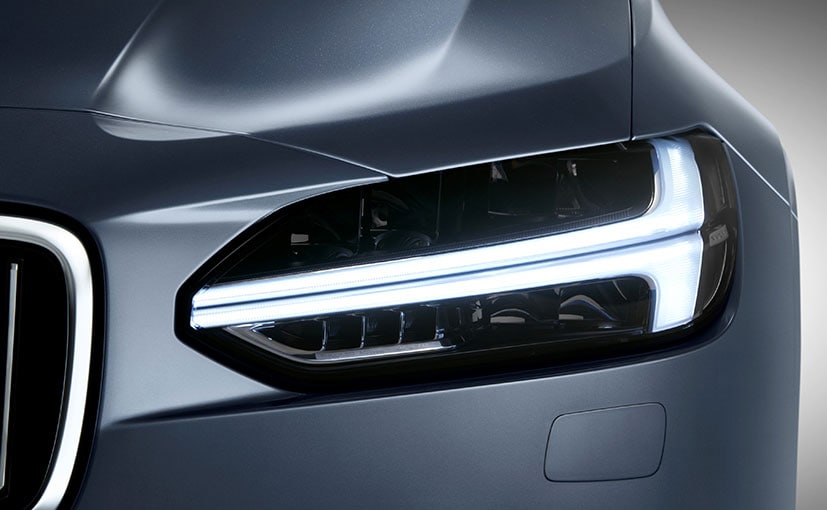
Volvo S90 – Thor’s Hammer DRLs
On the outside, the car looks pretty and yet has a bold and slightly masculine stance to it. The design has some gorgeous bits – though added up you might think they all don’t go together. The XC90 achieved far more as a more comprehensive design in my opinion. The S90 feels a tad overdone. Yet the new Volvo face with its concave grille and Thor’s Hammer daytime running light pattern really works. The car looks modern, sleek and sexy too. Yet the flanks give it a stately appearance. The taillights are very cool individually speaking, but again I feel they don’t go with the proportion of the boot and rear three quarters. The boot lid itself though is very well sculpted. Frankly I need to revisit this point after a few weeks to see if I still feel the same way on the rear! Sometimes you get used to something and it changes your perspective doesn’t it?
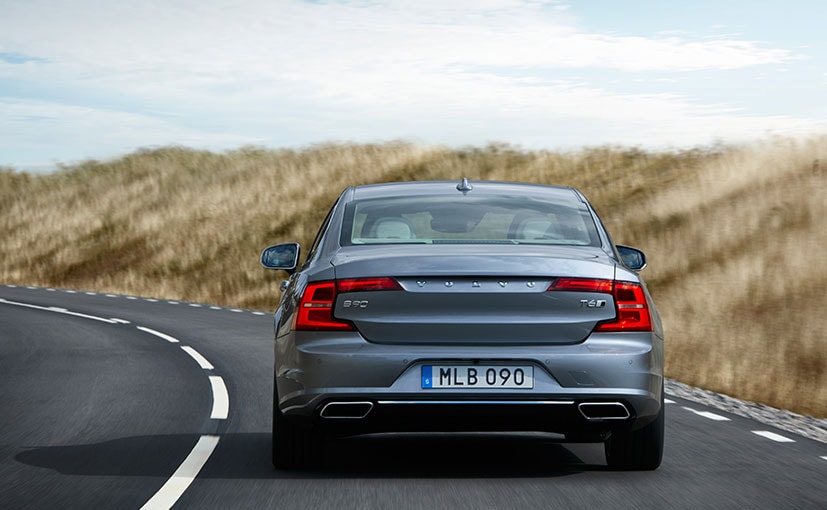
Volvo S90 Rear Profile
The sedan is far from a dying breed but its growth has certainly slowed since SUVs started blazing the sales charts. That’s true across many markets and of course price-points too. Having said that the executive or business premium sedan market remains reasonably vibrant. So the S90 is definitely going to cause a ripple or two. Is the car delayed? You bet. Volvo flogged its predecessor the 2nd generation S80 for 10 long years. The new nomenclature at Volvo means that there will be three clear product lines sporting the 90, 60, 40 badges with V (for station wagons), S (for sedans) and XC (for SUVs) in front of them. I wonder what Volvo will call its future full size flagship sedan (BMW 7 Series rival) when it comes to market though! Anyhow for now these three pillars will take Volvo into higher volume territory. And the S90 is a big part of that plan. It along with is alter ego the V90 wagon – which we sadly won’t be getting – must therefore break a generous piece of the pie currently held mostly by the German trio of BMW, Audi and Mercedes-Benz.
[“source-ndtv”]



